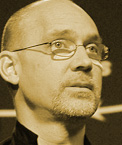- Speaking in Moscow
- Building SaaS Applications on Windows Azure
- Fall Speaking Schedule
- Fall Speaking Schedule: US
- Application Platforms and Business Processes
- Redefining Quality Assurance: An ALM Perspective
- Introducing Windows Azure
- Videos: How SaaS Changes an ISV's Business
- The Business Value of Agile Development
- How SaaS Changes an ISV's Business Model
Opinari
# Monday, December 03, 2012
I participated in the CloudBeat 2012 conference last week, a wide-ranging event covering many aspects of cloud computing. As always, spending time in this kind of diverse environment sparks all kinds of thoughts. Here are a few of them:
- There’s a huge gulf between what the cloud cognoscenti think about and what their enterprise customers think about. I’m just back from a round-the-world tour in which I spoke with hundreds of IT leaders in many countries about public cloud platforms. The debates that animate CloudBeat attendees include things like the relative merits of Amazon/OpenStack-style clouds, where the application provides reliability, vs. VMware-style clouds, where the hardware provides reliability. This is an important issue, but the vast majority of enterprise decision makers don’t yet understand this distinction. They’re still trying to find compelling reasons to use public cloud platforms at all, along with relatively safe ways to dip their toe in this new water.
- VMware sent its CTO to the conference, as did Cisco, while Google was represented by the VP of Google Enterprise. Amazon sent--well, Amazon sent nobody. I often see this at Silicon Valley cloud events: every presenter assumes that we’re all familiar with AWS technologies, but live Amazon people are thin on the ground. True, Amazon’s re:Invent conference was happening in Las Vegas the same week, but this pattern holds regardless. AWS is the air that cloud people breathe--Amazon itself doesn’t need to show up at events like this.
- Back to the Amazon/OpenStack-style cloud vs. VMware-style cloud: Building highly reliable apps on Amazon/OpenStack-style clouds requires embracing a model where application logic is implemented in identical stateless replicas, with all state held externally. With VMware-style clouds, enterprise developers can build apps just as they always have--the hardware is reliable. It’s unclear to me which of these approaches will win; it’s entirely possible that both will survive. ISVs building new SaaS applications will gravitate toward Amazon/OpenStack-style clouds, while enterprises are likely to prefer VMware-style clouds, at least initially.
- There’s still no agreement on what PaaS means. I attended an interesting panel of PaaS company CEOs, but their offerings were different enough that it’s unclear whether they even compete with each other. Everybody agrees that PaaS means providing higher-level services on top of raw VMs, but exactly what those services should be is still an open question.
1 comments :: Post a Comment
<< Home


